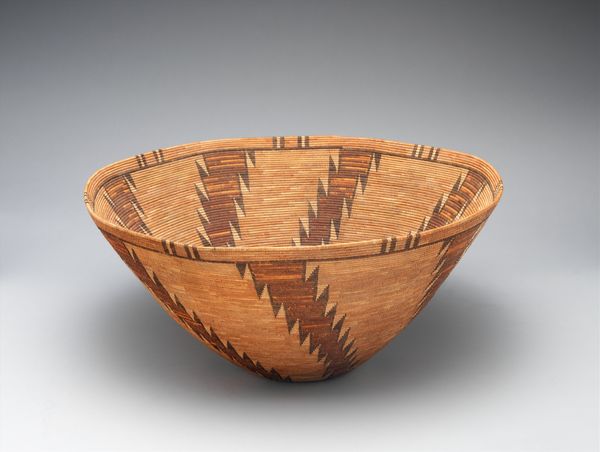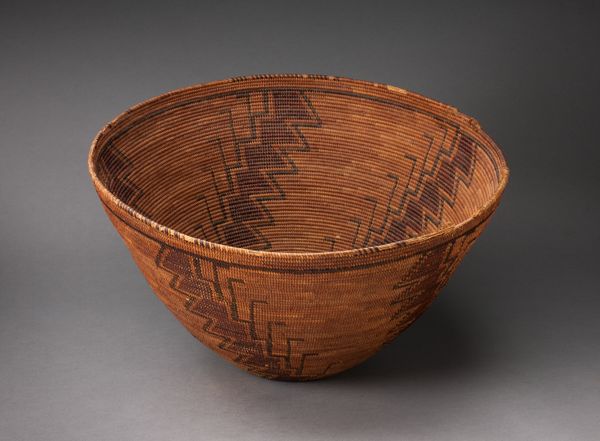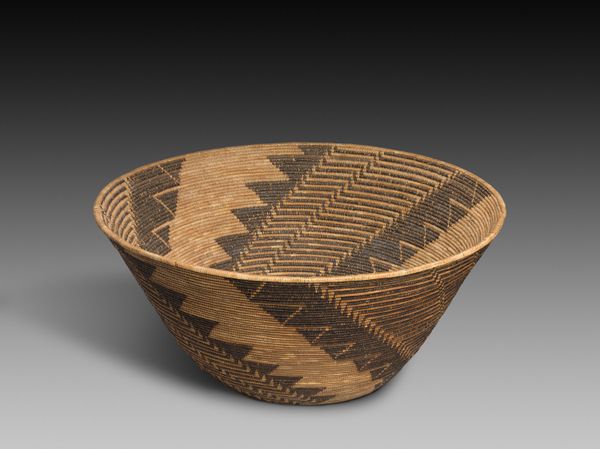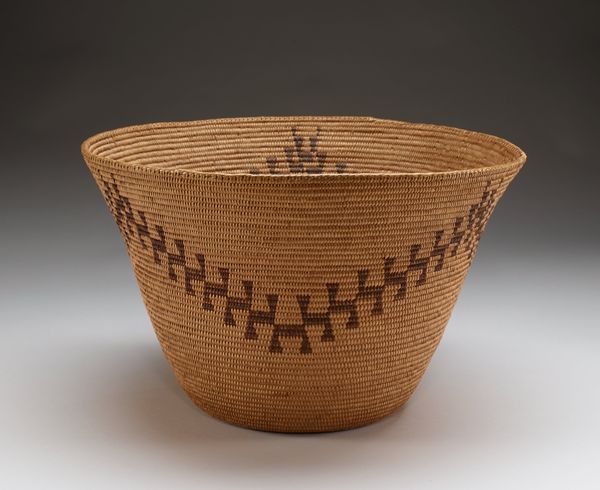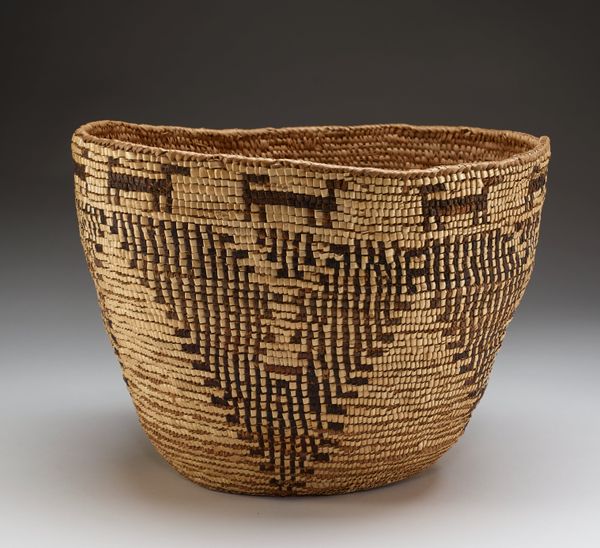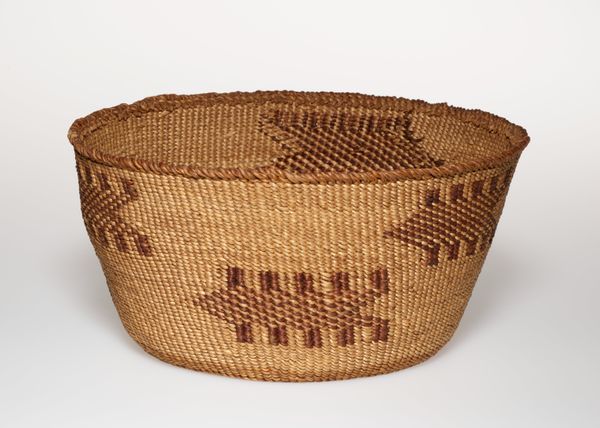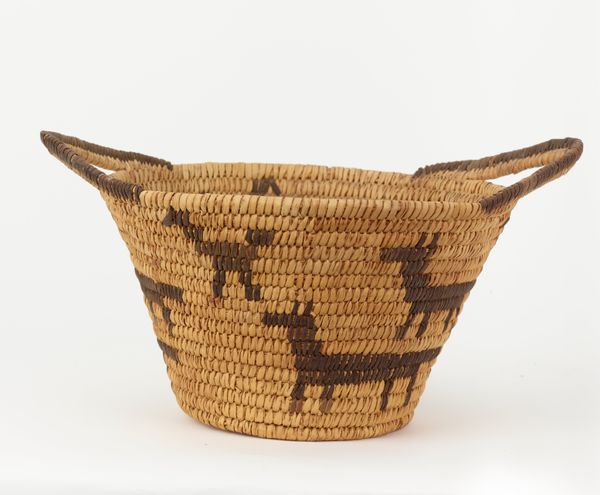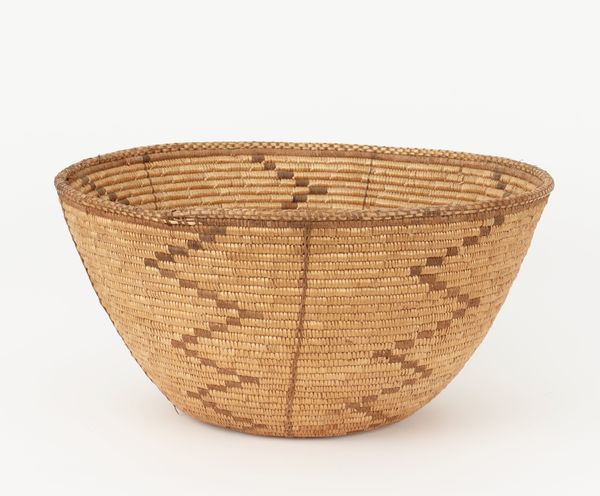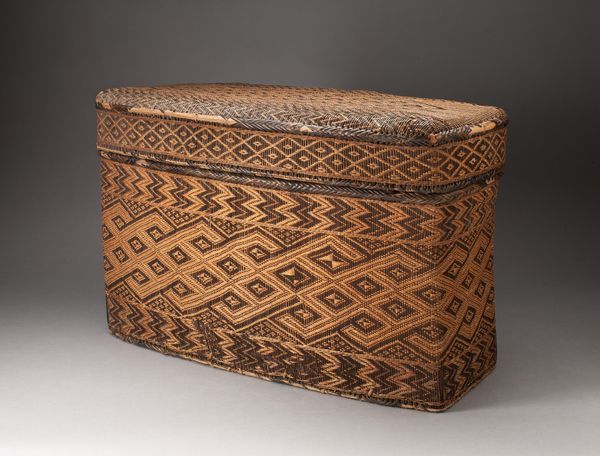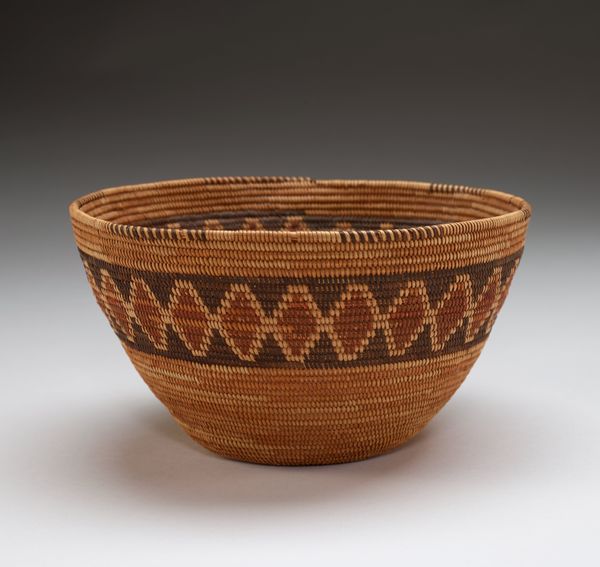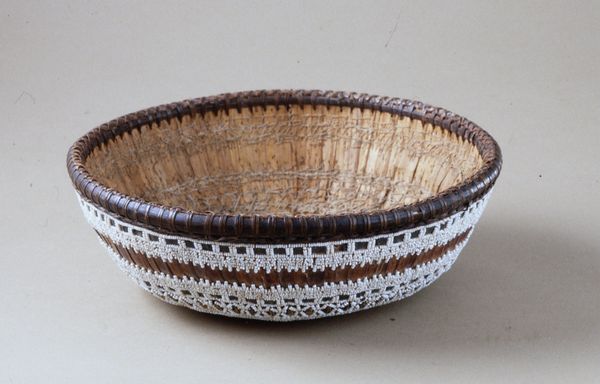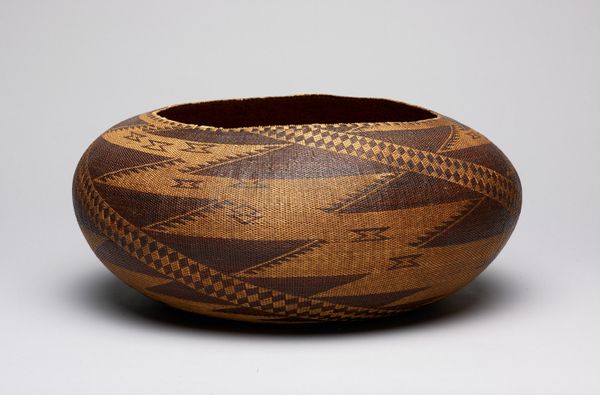
fibre-art, weaving, textile
#
fibre-art
#
weaving
#
textile
#
geometric
#
ceramic
#
decorative-art
#
indigenous-americas
Dimensions: 38.1 × 50.8 cm (15 × 20 in.)
Copyright: Public Domain
Curator: Look at this Panamint basket, made around 1900. It’s a beautifully woven piece of fibre art currently residing at the Art Institute of Chicago. Editor: My first impression? It's giving me this deep sense of groundedness, almost like staring into a warm, woven earth. I find the simplicity of the geometric designs strangely hypnotic. It’s both practical and spiritual. Curator: Absolutely. When we talk about baskets, so often we relegate them to ‘craft,’ a term that subtly diminishes the immense skill, time, and labor involved. This piece, made of carefully selected and prepared plant fibers, speaks volumes about the maker’s intimate knowledge of the natural world, no? Editor: It does. The time and energy are palpable, especially when we think about the whole process – from gathering the materials to the meticulous coiling and stitching. It transcends utility. Each stitch is like a brushstroke, isn’t it? I bet we could consider how it functioned within a social and economic context; where did the maker obtain or gather raw materials; was the resulting item a barter piece; what needs did it address, aesthetic, ceremonial, practical? Curator: Exactly! Plus, there is such refinement, even poetry, in that geometric pattern, like the quiet language of nature itself. The repetition feels like meditation, a dance between the hand, the material, and the spirit. And don't overlook its scale. Think of the stamina and intention that informs every pass! Editor: I hadn’t quite framed the weaving as a meditative or spiritual practice, but that really clicks into place now. Knowing that this functional object possesses that additional power underscores its intrinsic artistic value. Its inherent labor and complex materiality really set it apart! Curator: Indeed. Looking at this, I find myself thinking about our relationship to objects, to nature, to each other. A simple basket can be a profound teacher. Editor: And I’m leaving here considering not just what it *is*, but what it *took* to bring this singular work to life!
Comments
No comments
Be the first to comment and join the conversation on the ultimate creative platform.
